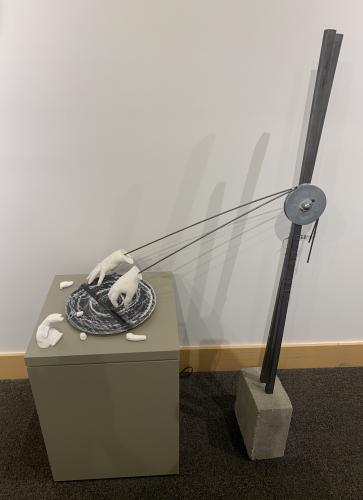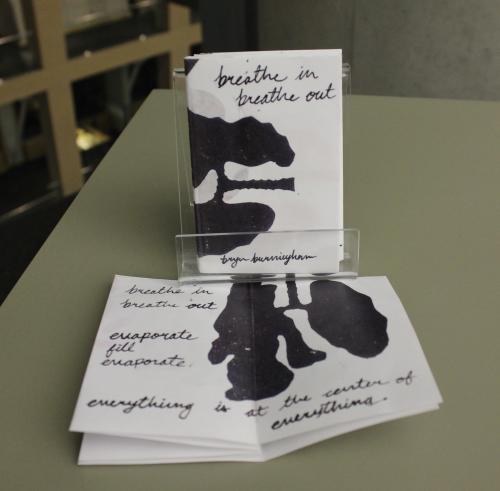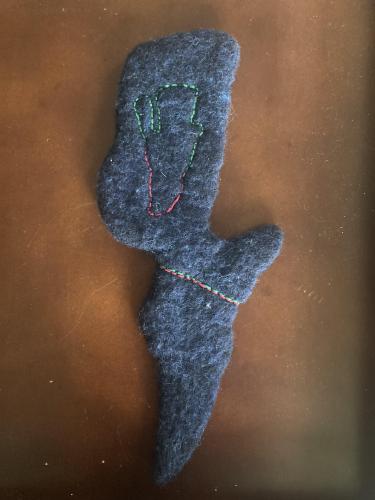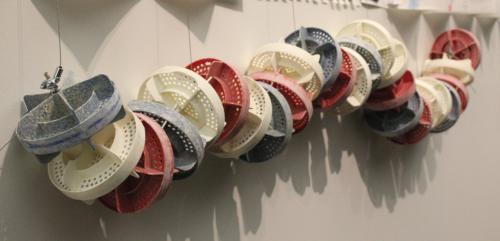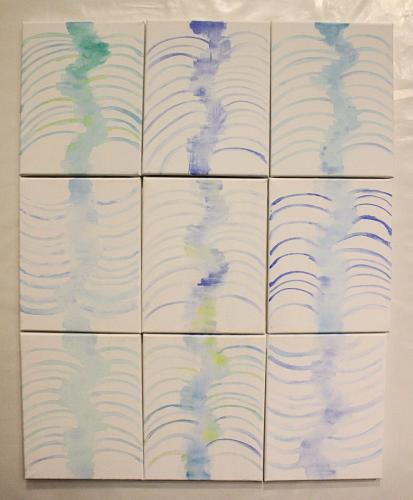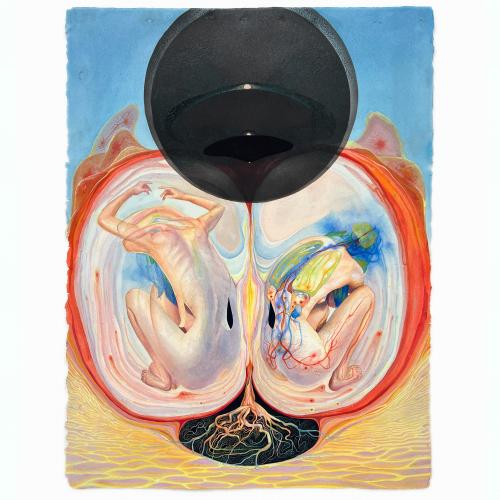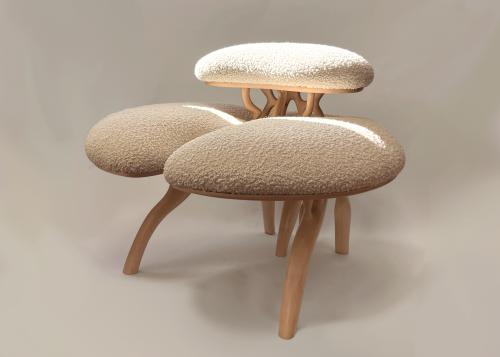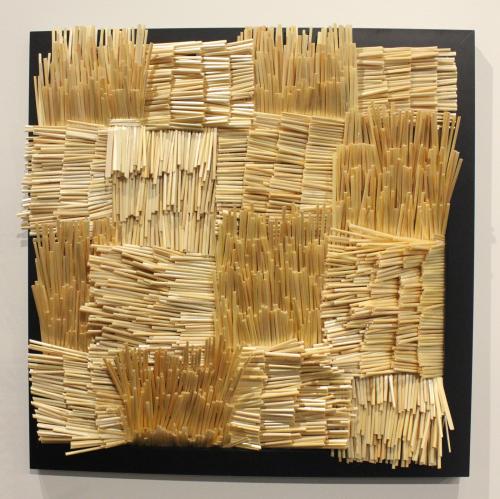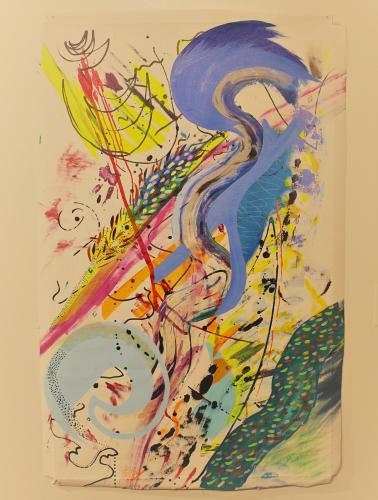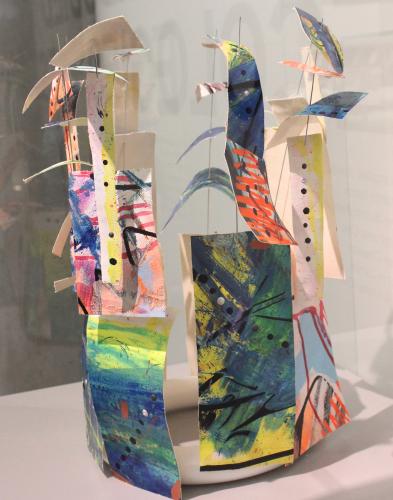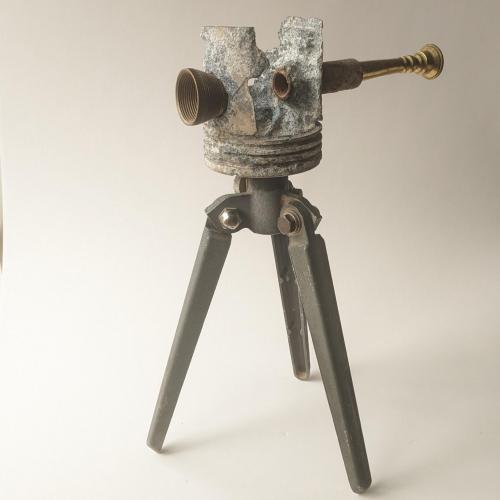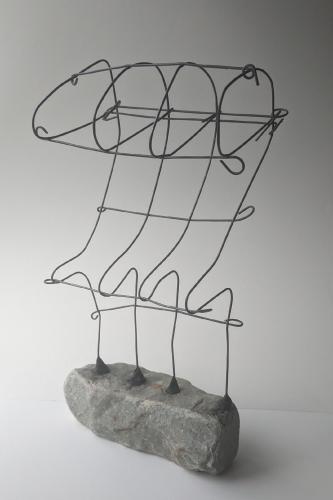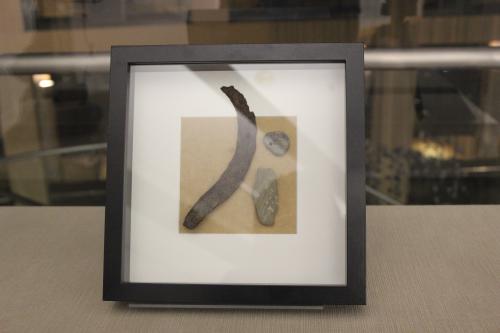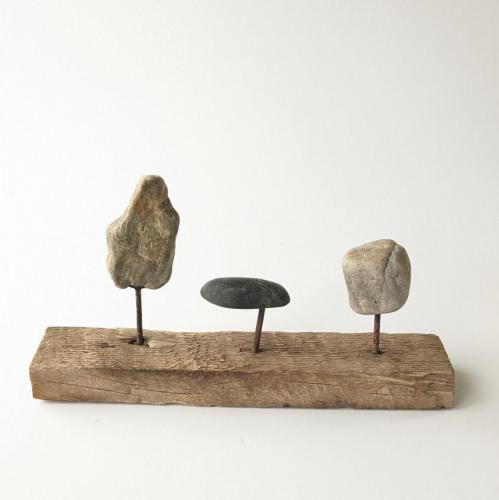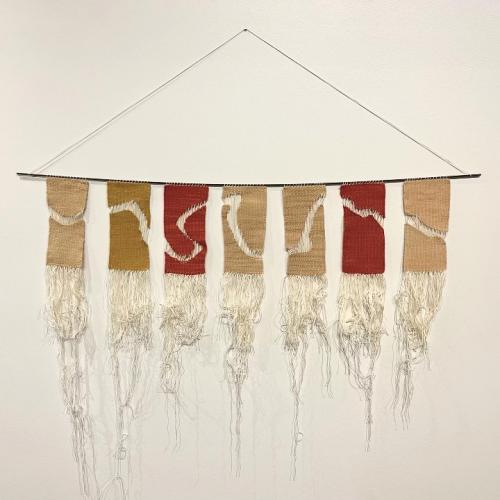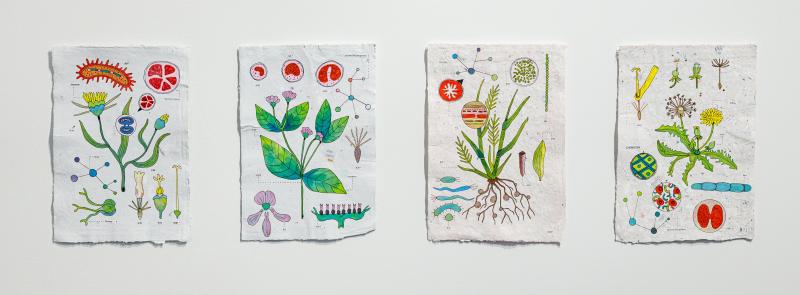About · Site Accessibility · Key Terms · Artists · Resources
Thank you for visiting the Embodied Ecologies Digital Archive. We're so glad you're here!
Embodied Ecologies is a collaborative art project and installation. Embodied Ecologies was created in Salt Lake City, Utah. The project is focused on disability, the environment, and community care. Embodied Ecologies was created through a partnership between two groups. These groups are the nonprofit Art Access and the Environmental Humanities graduate program at the University of Utah.
This website shares information related to the Embodied Ecologies project. The information includes artist bios, artist statements, photos of art, and descriptions of art. There are five total sections, including this one. At the end of each section you have the option to continue or return to the main menu.
You've reached the end of the "About" section. CONTINUE TO SITE ACCESSIBILITY or RETURN TO MENU.
Accessibility is a top priority of this site. The following six points explain the design choices of the website:
- Layout: The headings and single-page format make it easier for a screen reader to skim through the different sections of this website. The single-page format also means a screen reader only needs to read the information at the top of the page once.
- Colors: This site uses basic fonts and high-contrast colors to make the text easy to read. This site uses the colors of cream and dark green. These colors were chosen for their contrast and association with the environment.
- Section Dividers: The dividers between sections are a cream colored, wavy line. They let you know you've reached the end of a section. The pattern evokes water and mountains. These features are important to the ecosystem of Salt Lake City. Water and mountains are also important to the Embodied Ecologies project.
- Alt Text: All of the images on this page include alt text. Alt text is a short description of an image. These descriptions are helpful for people who cannot see an image. The alt text for each piece of art was was written by the artist that made that piece. You can also see the alt text if you are not using a screen reader. To do this, left click on an image and press "inspect." The alt text is written after the line of code that begins with "alt=."
- Audio: You will find recordings throughout the site. Listen to the recording at the top of each section to hear Nataile read the section's text. Many of the artists also recorded visual descriptions of their artwork. Listen to these recordings if you would like to hear the artist's describe their art. For a transcript, click on the image of an art piece. This will take you to the piece's item page. The transcript is located under the header "Visual Description." The item page also contains more images and information about each piece.
- Plain Language: When possible, the writing on this site is in plain language. According to Reid Caplan, "plain language is a style of writing. Plain language gets written using smaller words and shorter sentences. This helps people understand writing better. Plain language helps people who have a hard time reading because of their disability. But writing in plain language helps lots of other people too. Plain language helps:
- people who are learning English as a second language.
- people who didn’t get a chance to learn how to read complicated writing.
- people who don’t read a lot.
- everybody!"
Source: What is Plain Language?
Not all of the website is written in plain language. To help with this, the next section includes definitions of key words for the site.
You've reached the end of the "Site Accessibility" section. Please email Nat if you have any questions or suggestions related to the accessibility of this site. CONTINUE TO KEY TERMS or RETURN TO MENU.
This section provides definitions of thirteen key terms. These key terms are important for understanding the content on this website. Some definitions have been shortened for clarity. There is an asterisk on all shortened definitions.
- Ableism: Discrimination against people with disabilities. Source: Reid Caplan
- Acessibility: To be easily able to get to something or to comply with federal laws and standards to help people with disabilities. Source: Plain Language Medical Dictionary
- Adaptation: Making changes to live with the impacts of climate change. Source: Guide to Climate Change Jargon
- Air Quality: The degree to which the air is clean and free from pollution. Source: Oxford Learner's Dictionary
- Climate Change: When the weather and temperature all over the world changes. This makes the environment harder for everyone to live in. Source: Reid Caplan
- Disability Justice: A movement that fights against discrimination. It got made by and for queer and trans disabled people of color. You can learn more about disability justice by going to 10 Principles of Disability Justice . Source: Reid Caplan
- Environmental Justice: The principle that all people and communities have a right to equal protection and equal enforcement of environmental laws and regulations. Source: Dr. Robert Bullard
- Great Salt Lake* (GSL): A large shallow lake in the US state of Utah whose water is saltier than seawater. Source: Oxford Learner's Dictionary
- Indigenous: People who were the first to live in a certain place. For example, Native Americans are the indigenous people of the United States. Source: Reid Caplan
- Interdependence: Everyone needs support sometimes. We must work together to meet each other’s needs. We must create a community that helps one another. This is called “interdependence.” People who have disabilities must be able to choose the types of support they need and want. People should have lots of options for how they get support – not just what is offered by the government. Source: The Arc Minnesota Plain Language Disability Justice Principles
- Mitigation: Stopping climate change from getting worse. Source: Guide to Climate Change Jargon
- Pandemic (as in the COVID-19 pandemic): When a disease starts spreading really quickly, and a lot of people get sick. Source: Reid Caplan
- Pollution: Pollution is when the environment gets poisoned by something. For example, smoke from factories pollutes the air. It makes it dangerous to breathe. Source: Reid Caplan
You've reached the end of the "Key Terms" section. CONTINUE TO ARTISTS or RETURN TO MENU.
This section includes bios and artist statements from the artists in the Embodied Ecologies installation. This section also includes images of the artwork in the Embodied Ecologies installation. Some artists contributed one piece to the show and some artists contributed multiple pieces. The artists also wrote visual descriptions of their art. These descriptions are linked as audio clips beneath the image of each art piece.
To access the transcript of the visual description, click on the image. This will take you to a page with information about the artwork. On this page, you can also learn the medium of the art piece, the materials used, and who took the photos of the art.
Chanté Burch
Artist Bio
Chanté Burch is a multidisciplinary artist and designer, born and raised in Salt Lake City. They are currently attending the University of Utah. Their practice mainly consists of digital or performance-based work in mediums such as web, sonics, motion graphics, and dance. Recently branching their practice to include physical making, they typically include technology in their work. Research and experimentation are the foundations of their practice. They seek to create simple yet impactful work from ephemeral or intangible phenomena.
Artist Statement
The piece I created for this exhibition is called c-x. It focuses on ideas of cleanliness, compulsion, and ritual surrounding disinfecting the body. I decided to use hands as the main subject for this piece. I did this due to the ubiquitous and public nature of hand hygiene. In 2020 hand sanitizer sales went up by about 600%, signaling a massive change to people’s hand hygiene rituals. COVID-19 altered feelings of cleanliness. The use of hand sanitizers and antibacterial soaps while immediately easing the stress of feeling contaminated, can have unintended consequences. Skin issues and accidental ingestion are personal examples of negative effects. Damage to the environment, water sources, and the creation of antimicrobial resistance are large-scale consequences. In this kinetic sculpture, the continuous movement of the base will slowly erode the hands leaving behind dust and fragments.
Bryn Burningham
Artist Bio
Bryn Burningham is a printmaker, poet, book, and fiber artist based in Utah. She is trained as a fine artist and printmaker, first at Snow College then at Utah State University. The eldest of nine children, she volunteers on her town’s fire department along with three of her brothers, her dad, and one of her sisters. She spends much of her free time in the house she grew up in, though she dearly loves her own home with the pink-tiled kitchen and various plants growing in every window. She strives to do better by nature both in her life and artwork.
Artist Statement
Water/ Air is an artists’ book made from a Great Salt Lake levels map with elements of embroidery and block printing. The map is from GSL: An Overview of Change (Gwynn, J.W. 2022) showing a historic high of 4,212 feet in 1986, an average of 4,202 feet, and a previous historic low of 4,191 feet in 1963. On July 3rd 2022, the lake hit 4,190.1 feet, beating the newer record of 4,190.2 feet in 2021.
The Great Salt Lake is integral to health of the Salt Lake valley, the surrounding Wasatch Mountain snowpack, and to migratory routes of land and sea birds. The artist has chosen to connect the lake to imagery of lungs, referring to the toxic dust uncovered and dispersed by evaporating water levels. Although currently society and humanity feel separated from nature and ecosystems, it’s impossible to disconnect the land from humans, and from our bodies. Our bodies are built out of the air, water, and food around us, and our bodies are shaped by the landscape we choose to live in, whether from pollution, topography, elevation, or humidity levels. Ecosystems impaired by human activity -in the case of the Great Salt Lake; a waterway disrupted by human consumption upriver and within the lake itself- lead to impairment of our bodies. Humanity exerts our will upon our landscapes, but the landscape returns the favor.
Stephanie Choi
Artist Bio
Stephanie Choi is a poet whose work appears or is forthcoming in Bellevue Literary Review, The Cortland Review, Electric Literature, Poetry Northwest and elsewhere. She is pursuing her Masters in Fine Arts at the University of Utah.
Artist Statement
What are the ways the word spine resonates? In sound, in sense. My pieces interrogate my relationship to the word and, hopefully, explore the many entangled and often conflicting emotions and ideas I have around the word. I was diagnosed with scoliosis when I was twelve years old and for two years, I wore a back brace. As I write in my essay “Spine: Rematerialized”, I had to wear brace every hour of the day (except when taking a shower or when I was in the pool, since I was a competitive swimmer); otherwise, I used the bathroom and slept in it. The goal was to stop my spine from curving while I was still growing. The doctor decided I didn’t have to wear the brace anymore when I was 14, the typical age of puberty, and I go for check-ups for a couple years to make sure I wasn’t still growing until I was safely out of the threshold for growth. I haven’t had my spine measured in over a decade, and yet I feel like it’s curved more when I curve my arm around back and run my fingers along it. I’m interested in the temporality of disability and how chronic, invisible pain manifests. This might be a kind of mirroring for my interest in how the word (sound and idea) of spine manifests across other aspects of my life—the lane line, the book, bitter gourd. The lane line brings in our theme of water; the book and text—weaving; the bitter gourd and relationship with my grandmother— kinship.
I’m also very interested in visual art in general. As a literary artist, making the visual elements of this piece were a stretch exercise for me and my visual art “ability”. I’m trying to question the ways in which my own notion of “art” has been colonized and made “straight” in a sense. The cuts of the book, the lines of the watercolor are not clean, not straight—partially because I’m not “skilled”, but also serve as a meta commentary on the practice of making art and stepping out of certain preconceived notions—straight lines, boxes—and comfort zones.
What are the ideas of straightness, of normalness, of ability that pervade through thinking about the body and the spine, specifically...about art? My work does not provide answers to any questions but tries to think about what the answers might entail through entanglement.
I invite the reader and viewer to participate in my work—to spray the canvases, to play with the book, to touch and move the lane line. As Petra Kuppers writes in “Writing the Salamander”, “Water rushes in and makes experiential the space between us. Water rushes in and cuts off the air that so invisibly sustains you and me. Water rushes in, gravities shift, and eddies stroke my limbs. I am intrigued by the way we can align biologic and linguistic influences, narrative lines, and sentence structures.”
It’s an honor to embody an ecology with you.
Laurie Larson
Artist Bio
Laurie Larson is a Salt Lake City based artist focused on topics in design and biology. Currently pursuing her Master of Architecture at the University of Utah, Laurie has shifted focus from the animation and media arts she studied in her undergraduate career to focus on the built environment. She aims to pull this education into her artistic practice and hopes to contribute to work being done in empathetic, resilient, sustainable, and humble design. Resonating with the New Materialists and work being done in Biodesign, Laurie is motivated by the fit and shape of designed objects with human and non-human bodies. Laurie orients her aesthetic sensibilities around her own biophilia/phobia and is interested in motifs and forms that express the beauty of organisms, the self-organization of material, and the tremendous horror of organic matter.
Artist Statement
Chair No. 2 is a desire object gleaned from the hyperactivity I feel within my body, and the spite I felt for the chair I owned in 2019. This is the second iteration of my chair design which is intended to facilitate multiple ways of sitting so that I can move between positions frequently. The chair is designed to visually echo bodies; looking all at once to be dendriform, animal-like, and fungal. The look of this chair and the time and methods required for its construction are deeply antithetical to the chair I owned in 2019, which was injection-formed from bright green plastic. It has scars from it’s violent, rapid, and demanding manufacturing process. It has an orange-peel texture. It curves and cups at ninety degrees: its form is willing to hold, but only in the form of sitting. So stern in it’s function, the object disconnects me from my body. Chair No. 2 is ambiguous. Formed from Maple’s body and my time to be delicate and biological.
Bodies are temporary boundaries: matter organizing itself into a creature that slowly drifts into something else. Dune Fruit is about boundaries, iterations, drift: how liveliness in matter propels itself forwards, and the essential tools that have developed wholistically throughout life in order to form creatures.
Mālia Malae-Godinet
Artist Bio
Mālia Malae-Godinet is a queer disabled Sāmoan interdisciplinary artist passionate about challenging how we approach, perceive, and intake art and how we define what an artist is. Mālia is eager to generate conversation and create counter-narratives surrounding what it is to be disabled, specifically within artistic space.
Artist Statement
This piece is a commentary on ecofascism, and the growing wave of activism focused on eliminating single-use plastics. This narrative ultimately contributes to the harm and erasure of Disabled Pacific Islanders and their unique experiences. The focus on single-use plastics further marginalizes and isolates disabled people from living safe, accessible lives while simultaneously distracting from one of the most significant contributors to the global climate crisis and pollution of the Pacific Ocean and Islands—militarization. Militarization has a unique history and impact throughout Oceania, particularly its contribution to the destabilization and displacement of nations and mass disabling events impacting generations across the diaspora. Together, these produce a unique experience for Disabled Pacific Islanders, who are the first and hardest hit by the climate crisis but often aren't recognized. -- Utah is home to the highest per-capita population of Pacific Islanders in the contiguous U.S. of those Pacific Islanders; it's unknown what percentage are disabled due to statistical erasure under the "Asian American & Pacific Islander" label.
RESOURCES:
Pacific Cimate Warriors
PIK2AR
Disability Together
Erin Meagher
Artist Bio
Erin Meagher is ever-learning to live/love her identity as a disabled/human. In her storied life, art-making has been one of the few constants. When no one listens, art has heard.
For Erin, art has given voice to all that feels unspeakable and unspoken. Consistently forced to reinvent how to sustain herself, Erin has often lived on the gratitude she feels creatively embodying the spirit we all carry tucked inside. Erin’s art mediums have shifted to encompass whatever resources and (in)stability allow her to access, and so in a sense, disability expands Erin’s artistic range even as it limits her other material choices.
Artist Statement
We so often call history the story of what happened, but isn’t to be alive the feeling? And what is the value of what is occurring if we do not lift to the surface the feeling of what is happening for the people living within the story? My work removes the story from the canvas and surfaces only the feeling of the living through. In this way my work could be considered a picture of aliveness, self portraits of the me living through the history others will summarize, scrutinize, analyze and sterilize to tell. What is it to feel, to watch, to witness your body that you occupy and the place you reside squeezing the life out of you, but slowly, but perceptively, but to experience the beauty of the place and that body, still, nevertheless? I continue to question life leading me to move to a place with unsustainable access to water and increasingly hazardous air. A place filled with cars speeding on the widest, fastest highways I have ever seen. But a place filled with trees, mountains, roses. In the ecology of this place, my disabled body has become more troublesome, more painful, and I try to listen if that means I should leave, but as a disabled person my access to alternate lives and choices is diminished. From this place, from these questions, when my body allows, I create art.
In this piece I experiment with cutting down a canvas painted purely from an emotional space to fit into the form of a story book. My process itself was affected by my disability (when I could paint and how long) as well as the directives of weather and air quality (when was the heat manageable and the air breathable) given that my accessible art "studio" is a bit of private concrete outside my back door.
Disability has radically, permanently changed me. A real metamorphosis even if a fractured, unwanted one. Climate change may radically permanently change us too in ways we may never be ready for, never want, that we may wish ahead of time to forget. My hope is to continue being able to embody the beauty and the art of aliveness within the ecology of these disabling times.
Victoria Meza
Artist Bio
Victoria Meza is an indigenous artist with heritage from Peru, the Navajo Nation, and Assiniboine-Sioux tribe. Many of her influences come from her cultural heritage, and her work celebrates that heritage. In addition, her work explores the confusion of navigating different cultures and embracing what it means to grow on one's own terms. With her background in psychology and behavioral health, she is passionate about amplifying conversations about mental health and overcoming generational trauma. She is excited to continue to engage with challenging ideas and evolve her art practice through collaborating with others.
Artist Statement
Much of my work relies on lived experience, and this piece is no different. When I was thinking about my relationship to the Great Salt Lake and what I could bring awareness to, regarding health and the environment, I was struck by a conversation I had with some family members about the idea of kinship and how it is understood and practiced in one of my tribal communities. It resonated with me because it opened my eyes to how natural building community and caring for community as my family comes to me. Kinship itself is a familiar concept to most, if not all cultural groups. For me, the relationship between health and the environment in bringing awareness to the Great Salt Lake is as simple as cultivating kinship in our spheres of influence to take care of the environment as we take care of each other.
One of my hopes for this piece is that the idea of cultivating kinship is just as beautiful to you as it has been to me. Part of the process of this piece came together when I was considering how I experience kinship already. Over the past few years, I have had the privilege of getting to know and care for some incredible people who happen to be indigenous women of color. (I also know many other people who regrettably didn’t make it into this piece, but I hope they know who they are!) To me, they are strong pillars of inspiration and strength in the community. We each have strengths that help us to lift where we stand, and they certainly do that with grace.
To represent this, I took inspiration from ledger art that was common among Plains tribes in the 1800’s. This can be seen with the background text and the style of the figures on top of it. Although ledger art typically used paint as a medium, I chose to use ink and markers to complete this piece. The markers I used were a gift that reminded me of the beauty of sharing things we have to enrich each other’s life. For me, being able to make even a small connection to a part of my heritage I’m reconnecting with has been rewarding.
Sylvia O'Hara
Artist Bio
Sylvia Ohara is an assemblage artist. Ohara has always found interest and beauty in the overlooked objects of life. She repurposes found, recycled, and nature-made objects into art and jewelry. Her gather and curate approach began as a child in rural Utah, where she was free to explore and create with collected items. As an adult, her work is influenced by nature, industrial landscapes, and the details of everyday objects. Sylvia loves transforming reclaimed materials into something new and allowing for a different perspective of a familiar object. She explores themes involving strength transformation, contradiction, and erosion. She works with various materials ranging from textiles, paper, stone, glass, and steel.
Artist Statement
Periscope examines how environmental exposure shapes identity and ability. Water is used to communicate this idea. The elements in all art pieces have been impacted by water. From rusty iron to rocks shaped by erosion, water is force behind discord or transformation. Water does this in a slow and invisible way, which mirrors how disability plays out in society. Water is mostly seen as a pure and life-giving element. Yet, as our environment changes, water has the ability to make a person flourish or corrode.
The title, Periscope is a play on words. A periscope is an instrument used to see objects that are otherwise out of sight. In a society that does not value disability and difference, these identities are mostly out of sight... on purpose. O'Hara attempts to reframe difference and disability by transforming discarded objects to make assemblage art pieces. She hopes you will challenge your ideas about beauty, strength and difference by reframing the concept of transformation.
Michelle Wentling
Artist Bio
Michelle Wentling gew up in rural Northeast Ohio where her family has worked in the rail and steel industries. In 2018 she moved to Salt Lake City to study at the University of Utah. She has a background in Environmental Humanities and is interested in the connections between craft, ecology, and community. In addition to making art, she enjoys walking, baking, bike riding, and playing trumpet. Michelle currently works at the Utah Museum of Contemporary Art and is learning how to weave on a Macomber loom passed down from her late grandmother Maxine.
Artist Statement
Age ten: I'm at summer camp, lying on a makeshift raft in the middle of the Cuyahoga River. It’s made of patched-together newspapers and magazines, so I know it’s only a matter of minutes before it sinks. As I lay there, I feel water steadily filling the raft and my body slowly submerging beneath the river’s glimmering surface: an unintentional baptism.
Years later I learn that the Cuyahoga River, the site of this sacrament, has caught fire over a dozen times. Amid the industrial development of the Cleveland area in the nineteenth century, the Cuyahoga transformed into a landfill, carrying slicks of oil and other toxins on its waters. For decades the River showed no signs of visible life––not even leeches or slug worms who often thrive on waste and disturbance. The water that purified me as a child also carries memories of fire, oil, and steel––memories of humans’ past relationships with the land.
The negative space of these weavings outlines a section of the Cuyahoga River. Using hand-dyed, woven yarn in concert with rusted steel and tangled fringe, this piece blurs the distinctions between purity and toxicity. Cuyahoga Impression embraces imperfection and explores the possibility of repairing connection with places once sacrificed or neglected.
Kristen Vardanega
Artist Bio
Kristen Vardanega is an artist, illustrator, and cancer survivor living in Salt Lake City. Inspired by illustrated books and naturalist field guides, Kristen has kept a sketchbook of observational drawings since childhood. Their work lands in the intersection of nature and narrative: most recently a series of gouache paintings from photographs and memories of time spent outdoors. She is inspired by vintage scientific illustration, zines, tarot cards, comic books, block printing, bugs, birds, Swedish textiles, and ornate cowboy boots. One day she’d like to be a combination of John James Audobon, Carson Ellis, Eric Carle, Hilma Af Klint, and Mary Oliver.
Artist Statement
Reason for Concern borrows from scientific illustration, ecology, and cell biology; amalgamating observation, icons, and imagination to create jumbled, almost-decipherable diagrams. Numbers and words are cut and pasted from the artist’s own lab results, painted on paper created from medical bills, consent forms, and pharmacy paperwork. The handmade paper invents its own context, with inclusions and impurities as indiscriminate as nature itself. The artist is tasked with understanding their invisible disease: a blood cancer that originates deep in the bone marrow. Much like an opportunistic plant, cells spread efficiently, siphoning resources, aiming for monoculture. The familiar forms of recognizable weeds (dandelion, saltgrass, and thistles) act as a center point for increasingly nonsensical illuminations. Like the plants, the human is flowering and natural, three dimensional and wild. Like the weed, the patient is flattened and simplified, pressed under a microscope and pulled up by the roots.
You've reached the end of the Artists section, CONTINUE TO RESOURCES or RETURN TO MENU.
Disability and Climate Change
- Society of Disabled Oracles
- Disabled people being ‘systematically ignored’ on climate crisis, says study
- To Survive Climate Catastrophe, Look to Queer and Disabled Folks
- In Conversation: An Episode on Disability Justice
- Sunaura Taylor on "Disabled Ecologies: Living with Impaired Landscapes"
- Climate Change (Plain-Language Summary)
- Disabling Bodies of/and Land: Reframing Disability Justice in Conversation with Indigenous Theory and Activism
Disability Arts and Culture
- Sins Invalid
- Disability Readathon
- Crip Ecologies: Vulnerable Bodies in a Toxic Landscape
- Disability & the Arts: A Playlist Syllabus
- Claiming Connection: Cultivating a Relationship with Place as Disabled Artists
Access and Accessibility
- Sins Invalid - Access Suggestions for Public Events
- Access Intimacy: The Missing Link
- Alt Text as Poetry
- On Plain Language
- Access is Love
- Aimi Hamraie - Critical Access Studies
Embodied Ecologies
- Embodied Ecologies Where Disability Meets the Natural World
- Environment, Disability, and the Drying of the Great Salt Lake
- News x Arts: ‘Embodied Ecologies’ Explores Intersection Between Disability and Environmental Health
- Intersection of Disability and Environmental Justice
- Art Access Exhibit at Marriott Library is a Lab of Wonders
- Community Engagement Spotlight
- Art Access
- Environmental Humanities Graduate Program
- Digital Matters
Environmental Health in Salt Lake City
You've reached the end of the Resources section. Please email Nat with any suggestions for resources to add.
Thank you so much for visiting the Embodied Ecologies Digital Art Installation. We're so glad you stopped by. This is the end of the site. RETURN TO MENU.


